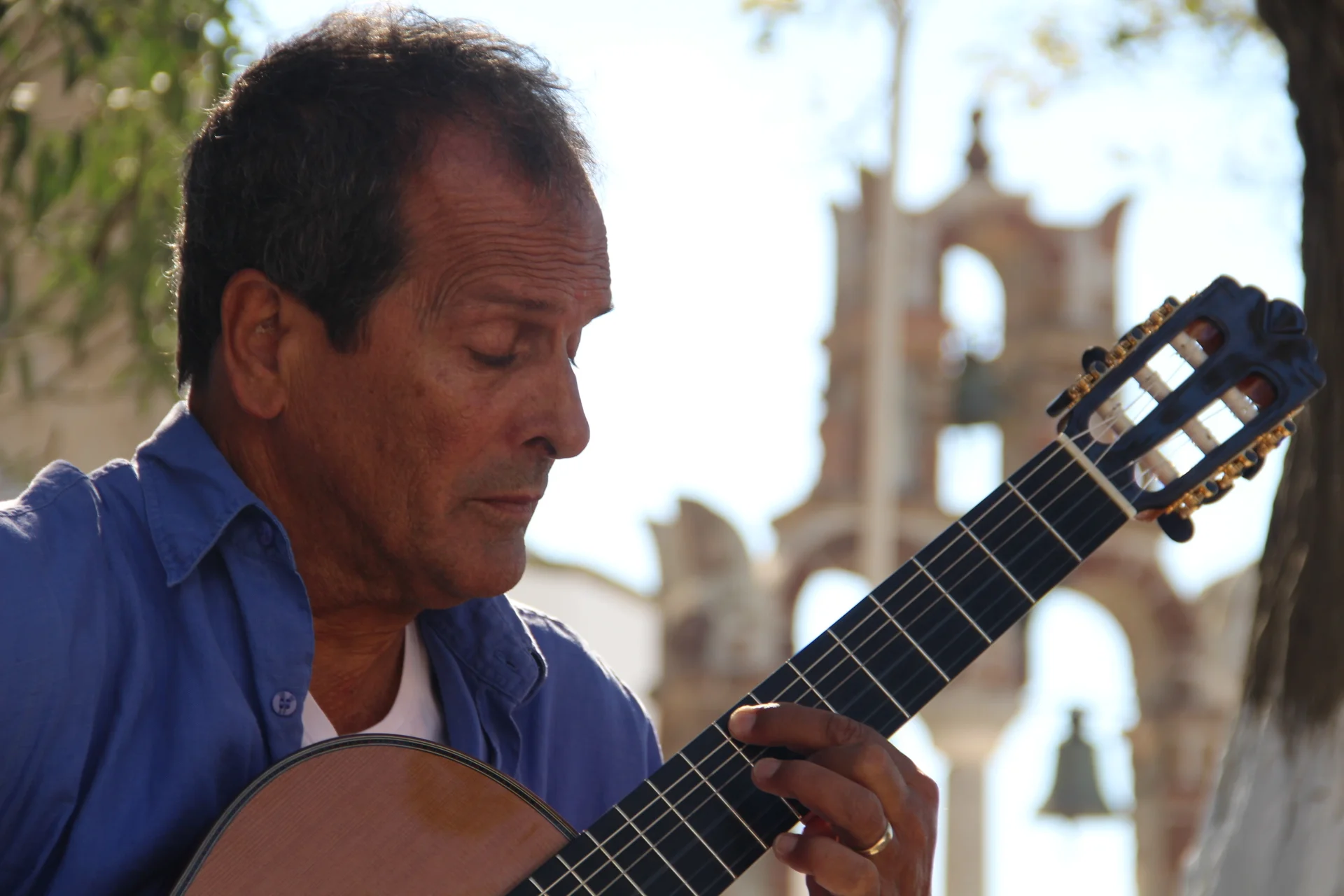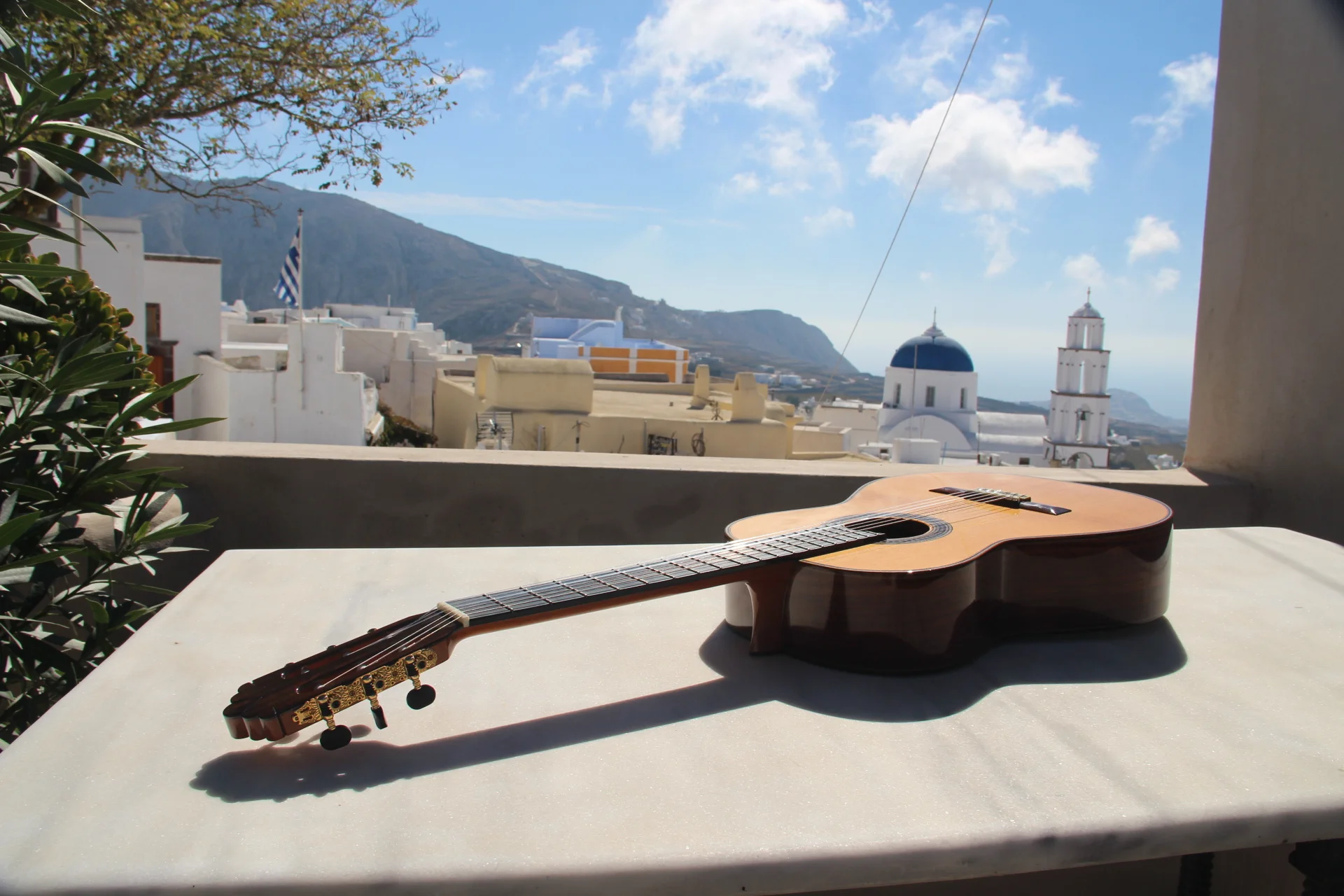The Mathematical Theory of Music
Music, harmonics, and sounds of beauty have been with humans since the beginning of time. It seems music is intertwined with consciousness and the mysteries of the universe. In Western Civilization, it was the Greek philosophers –through the Ancient Egyptian Mystery Schools— who began to theorize about music and harmonics when studying the secrets of our physical reality. However, it was Pythagoras during his meditations who discovered the octaves and the mathematics of harmonic ratios. Through this discovery, human beings have been able to design more complex string instruments that conform to the Pythagorean Law of Harmonics.
The guitar is one of the most popular and widespread musical instrument used today. Its evolution over four centuries witnessed the rise and fall of empires, but it also influenced higher thoughts bringing western civilization out of the dark ages and into enlightenment. So, what is the history of the classical guitar?
A Brief History of the Classical Guitar
The exact history is tough to come by, but there is a consensus that the modern classical guitar comes from two older instruments, the Vihuela, and the Baroque guitar. The Vihuela is a guitar-shaped instrument from the 15th and 16th century in Spain, Portugal, and Italy, while the Baroque Guitar is a 17th-century design with five-course strings. Courses are double strings that are plucked or strummed in unison.
The first incarnation of what we would consider a modern guitar began showing up during the Renaissance. It had four pairs of strings (i.e. courses) but was phased out by the five-course guitar a few years later. The standard tuning was A, D, G, B, E for the top five strings, which continues to this day. Also, around this time, the frets were increased from eight to ten, and finally twelve.
A little later in Italy, the six-course guitar became commonplace, but by the mid-18th century and early 19th century, the guitar evolved into a six-string instrument, which dropped the course-string design. However, these guitars were still smaller than the modern classical guitar.
The Modern Classical Guitar
Antonio de Torres is attributed with designing the first modern classical guitar in the 19th century. Although Torres’ guitars were smaller than today’s classical guitars, they were considered the “standard” at the time when he was constructing guitars.
Today’s Classical Guitars, or Spanish Guitars, are constructed of wood and use nylon strings instead of the metal strings found in “acoustic” and electric guitars. Traditionally, classical guitars have twelve frets with the 12th fret joining the neck to the body of the guitar, and 7 additional frets continuing into the body itself. The 7th fret is only a partial fret enabling high B to be played on the first and sixth strings.
Eric Henderson with Antonia and Andres Segovia
The Maestro Andres Segovia
In the 20th century, Andres Segovia legitimized the Spanish guitar by transcribing and consequently performing works written for the guitar, many of them dedicated to him by prominent contemporary composers. He proved to the world that the guitar was a concert instrument capable of projecting to large halls and concert venues and not just salons and small spaces. Some say it was Segovia’s influence that led the Torres design to be mass-produced the world over. And it was definitely Segovia who brought the fascination of classical guitar to a global audience.
Andres Segovia effectively utilized the technology of his day to reach a larger audience. He released phonograph albums and toured to audiences across the world, even appearing live on television and radio to bring his music to the attention of the world, inspiring others to follow in his footsteps. Segovia is still to this day one of the most renowned classical guitarists, representing the pinnacle of four centuries of classical guitar evolution.
Eric Henderson - Concert Guitarist and Composer
Eric Henderson, a child prodigy who began playing guitar at age six, studied privately with Andres Segovia from 1971 to 1975, beginning when he was only 13 years old. He also studied with Segovia’s only other private student, Aureo Herrero. He has continued the tradition of Spanish Guitar and you will find many of the Spanish masterworks in his repertoire. However, being the innovator that he is, Henderson has written numerous compositions, incorporating wide-ranging contemporary influences while staying true to the teachings of Segovia. He continues to explore new techniques and to compose technical studies utilizing a hybrid of approaches taken from such eclectic sources as electric guitar, flamenco, and lute. Join him as he uses this blog as a forum to discuss ideas and insights into such topics as tone, efficient fingering, speed and approaches to practicing.
Please sign up for the newsletter and follow Eric on YouTube, Facebook, Twitter, and Instagram.






